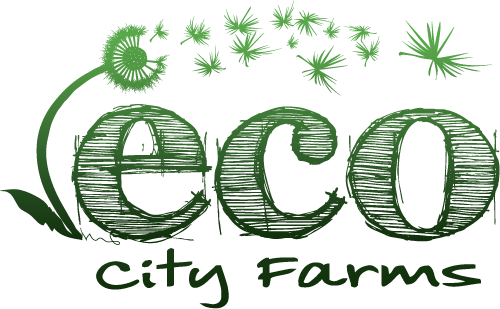Hot (inside) and Cold (outside)
This Saturday the weather was beautiful and we accomplished a lot with the help of a surprise volunteer group from the University of Maryland’s Social Justice Initiatives program, a part of TerpCorp that engages students in the community to address current issues facing society:


We finished putting the plastic covering on all of the hoophouses!
Here are some of the New Urban Farmer trainees enclosing the last hoophouse. We install plastic for the fall and winter months to keep the plants warm. In order to minimize our carbon footprint, we’ll be using a geothermal heating system, instead of electric heaters, during the coldest months.

Open for business! (Great functioning doors have been installed on the hoophouses as well.)
Let’s step inside to see what’s growing:

The plants are flaunting their colours, in harmony with the autumn theme.

The swiss chard is towering above the other plants.

A volunteer watering the plants in hoophouse number 3. The plants need to be watered more often now that the plastic has been installed, causing it to be much warmer inside by retaining heat from the sun.

We harvested 25 lbs of this spring lettuce mix last week and sold it to Busboys and Poets, a restaurant in Washington, DC that is part of the Think Local First movement. This image of spring mix would make beautiful holiday wrapping paper, wouldn’t it?

A miniature forest of kale and swiss chard.
Even though the days are chilly, the hoophouses become so hot and steamy inside during the warmest hours of the day (10 am – 3 pm) that we need to ventilate them. To let in cooler air, we prop wooden wedges to separate the layers of plastic and create 3-4 ventilation windows in the ceilings.


Two of our volunteers figuring out the sturdiest way to saw a wedge for the hoophouse.

In hoophouse #4, we finished installing the sinks, so now we can wash and package our produce more efficiently. We are now selling produce to four restaurants in the DC, MD and Virginia areas: the University of Maryland Food Co-op, Cafe Green, Busboys and Poets and Eatonville.

Our regular volunteer Noel and two students from UMD picked worms out of the vermiculture to “recycle” them by putting them in a bin of fresh compost for them to rework. The harvested vermiculture is then redistributed to our plants as a topping and a “worm tea.” We typically spray our plants every 3-4 days with the tea, which has been brewed for 24 hours with a burlap bag full of worm castings.

With the help of a window screen we are able to sift the vermiculture into the wheelbarrow and gently remove the worms that remain on top.
Hoophouse # 4 is also the hoophouse in which we grow our sunflower and pea shoots. Before planting the seeds in coir (moisture absorbent shredded coconut skins), we soak them in water for 24 hours to help them sprout faster.

These are the sunflower seeds…

Here are Rose and Roy, two of the New Urban Farmers, turning compost. The temperature in the center of the compost should optimally be around 140 degrees Fahrenheit. If the temperature is below 140 degrees, the compost can be heated up by adding water and turning it. This speeds up the process of decomposition, thereby raising the temperature.

Vinnie Bevivino, our wonderful director, closing up after a hard day’s work.
See you at the farm next week!
Peace and Carrots,
Natalya and the ECOcrew





Wow! So much has happened in the last few weeks. The doors look awesome, and the greens have grown enormously! Can’t wait to see you all this Saturday.
Alla and Sonia